Our special ed analysis has people talking
Special Ed is consuming a growing share of public school dollars. Is it helping? We owe it to students to regularly scrutinize these dollars to see if we can do more to maximize the outcomes for them.
A Financial Analysis of Public Funds Invested via ESAs, Vouchers and Tax Scholarships
This real-time financial analysis tracks state funding going into private options, to quantify how many public dollars are flowing through ESAs, vouchers, and tax credit scholarships. FY23-24 and FY 24-25 analyses available.
Which districts could return relief dollars to the Feds?
The Sept. 30 ESSER deadline is fast approaching. Which districts might miss it?
Schools have more staff than ever. Are kids benefiting?
Most districts now have more staff than ever before. Per usual, Edunomics Lab asks: Is it working? Are students benefiting?
30-Min Webinar: The Big Hire: Massachusetts’s school staffing changes
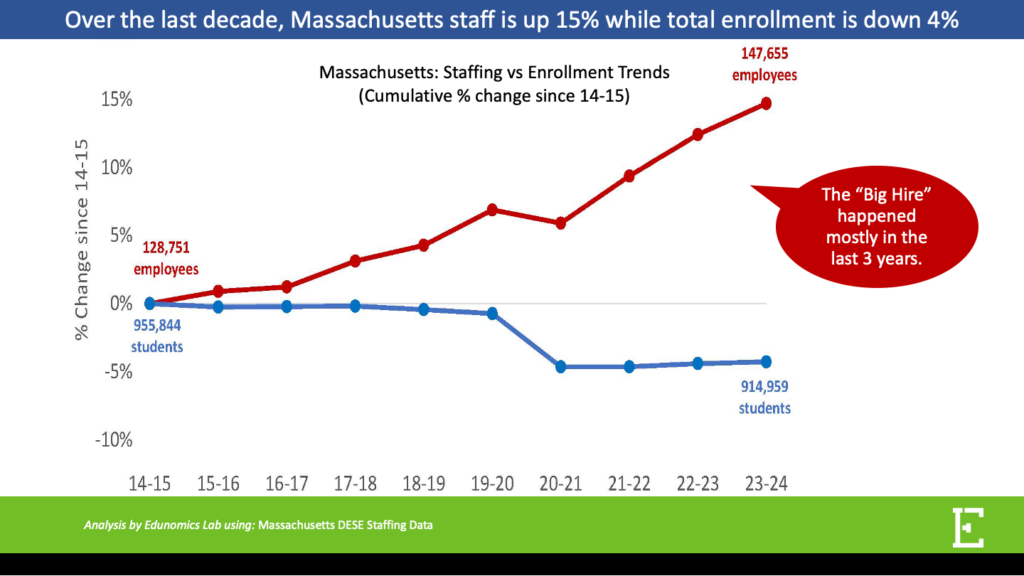
In this 30-minute webinar, we share findings from a new Edunomics Lab analysis of how staffing has changed in Massachusetts schools between 2020 and 2024.
30-Min Webinar: Are students benefiting from the rising costs of Special Ed?
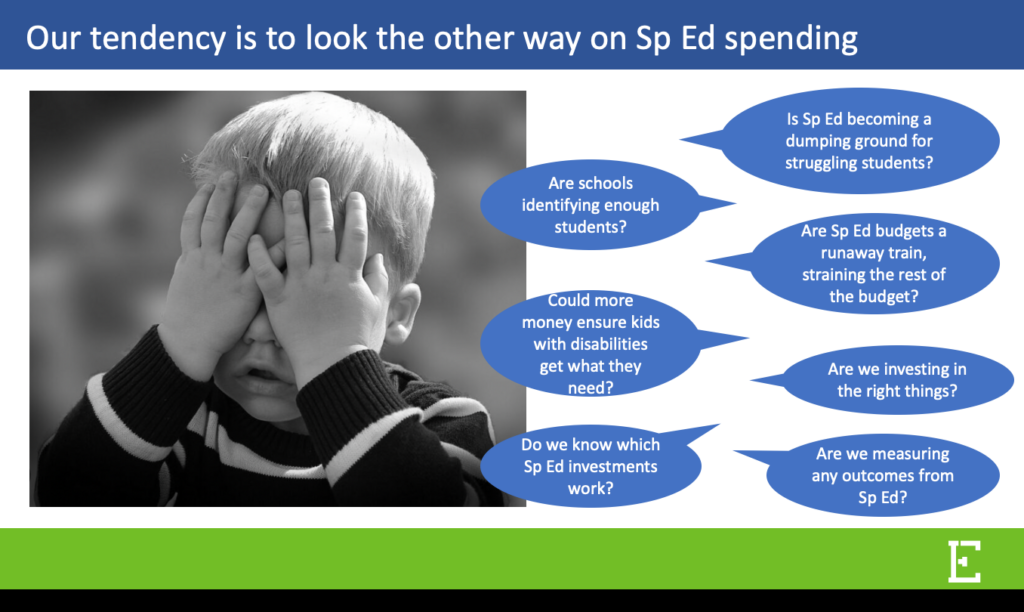
In this 30-minute webinar, we share findings from Edunomics Lab’s analysis of new Special Ed spending data to better understand the extent to which rising identification rates and staffing increases deliver value for students.
Why WA school budgets are getting tighter, and what can be done about it
In the Washington State Standard, Marguerite Roza and Ash Dhammani write that strategic financial leadership is more critical than ever to help communities understand tradeoffs and ensure WA state’s students get the most for every dollar.
Can vendors help our schools?
Optimism around the ed vendor space is running high.
30-Min Webinar: Can academic recovery continue when federal relief funds dry up?

We look at public education spending and outcomes over a decade, nationally and state by state, plus what the likely revenue trajectory could mean for future math and reading scores.
Widespread teacher shortages are over (mostly). Conditions are changing rapidly
It’s more important than ever to track real-time data.
California’s school funding crisis has arrived. Here’s how leaders can dig out
With pandemic recovery funds drying up, state funds tightening, and fewer students bringing fewer dollars, many districts have no choice but to reevaluate investments, downsize and likely reduce staffing.
With a Fiscal Cliff Looming, States Must Ensure Districts Maximize Every Dollar for Students
These five levers are low-cost and popular on both sides of the aisle.
Is it too late to protect what’s working as the cliff hits districts?
Next year’s school district budgets will be locked in this spring. After that, influencing spending for 24-25 gets a lot harder.
30-Min Webinar: Six months remain on ESSER. What’s left to do? What worked? What didn’t? What happens when it’s gone?

We take stock of what districts did and didn’t accomplish with the money, what’s left to do, and what happens when the money is gone during this 30-minute webinar.
Winding down ESSER. Is it working? What’s left to do?
Just 6 months remain on this massive federal program. While there’s still work to be done, we can already see it’s legacy taking shape. Here are a few highlights…
Bringing communities along during painful budget choices
For leaders facing tight budgets, there are better and worse ways to handle the next several months.
Closing schools: How much money does it save, and is it worth it?
School closure decisions are never easy. In this EdSource commentary, Roza and Dhammani outline several factors districts should consider in order to bring transparency to the process and ensure all students are served well.
School Boards Face Their Most Difficult Budget Season Ever

How can school board members bring their communities along in challenging financial times? Marguerite Roza and Laura Anderson weigh in at The 74.
State Revenues Outlook

This analysis provides estimates of year-over-year changes to state General Fund revenues.
Did the feds just extend the ESSER deadline?
In early January 2024, the U.S. Dept. of Education sent a letter to states with the latest on the ARP ESSER extension. Here’s our take on what it all means.
How legislatures can ensure school funds do more for students
K-12 funding is the biggest line item in most state budgets. Here are five policy levers that states can pull to help districts maximize the value of every dollar for students.
Who decides what to cut? Technically school boards do
School boards face tough tradeoffs as they decide what to keep and what goes away when federal relief funds dry up. Here’s what we’ve been learning about how boards engage in making financial decisions.
30-Min Webinar: What happens to K-12 nonprofits and vendors when ESSER ends?

In this webinar we look at what nonprofits and vendors should know about the end of ESSER and market changes in the coming years.
30-Min Webinar: Mayday… Mayday… Who Will Answer the Distress Signals Appearing in Some Districts’ Data?

This webinar looks at ways to read the distress signals in district data, raise the alarm, and take steps to help “Mayday” districts.
Mayday…Mayday…Distress signals are appearing in some districts’ data
A quick look at a district’s data can show whether it’s chipping away at learning losses, how quickly ESSER is being spent down, what’s happening to enrollment and more. In a few districts, some of the numbers amount to a distress signal.
30-Min Webinar: The ESSER Cliff: What state and district leaders in CT, MA, NH & RI should know as ESSER funding ends

This webinar shares an analysis of the pending ESSER cliff in districts in 4 New England states and key factors in protecting what matters most for students & district financial health.
The Fiscal Cliff: Exploring the Impacts on Equity

In this webinar hosted by the National Comprehensive Center, the Edunomics Lab team explores how the end of ESSER funds may affect equity
Where and how does inequity creep in?
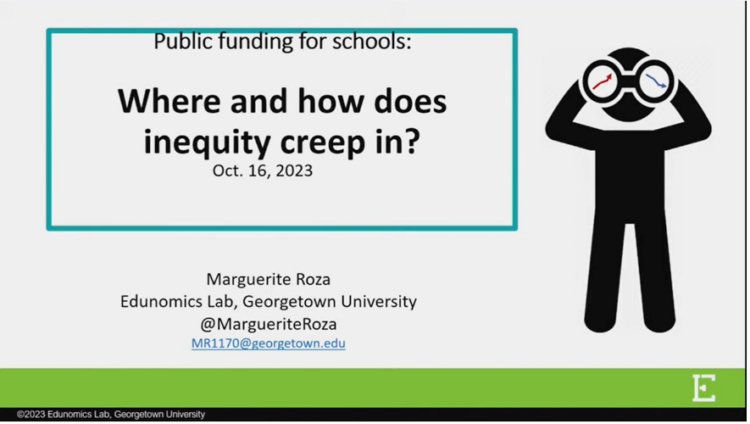
Marguerite Roza gave this presentation as part of panel on “Understanding Educational Opportunity Gaps,” at the University of Virginia School of Law’s launch of the Education Rights Institute.
The ESSER cliff will be worse in high-needs districts
High-poverty districts got more ESSER (which means the cliff will be steeper) and have spent their funds more slowly (leaving more to spend in the last year) than more affluent counterparts.
The ESSER fiscal cliff will have serious implications for student equity
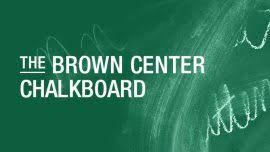
In this analysis published by Brookings, Marguerite Roza and Katherine Silberstein show that high-poverty communities will see sharper impacts to their school budgets when ESSER ends.
Recipe for High-Impact Research

In this blog published by IES, the Edunomics Lab team shares lessons learned about making research more useful for practitioners, including designing visualizations and other tools around user needs to make data accessible, actionable, and impactful.
The answer to: How to sustain efforts when ESSER ends?
Some ESSER-funded efforts are clearly worth saving. Doing so will require being aware of tradeoffs and making intentional choices.
The Grid: A Framework to Explore Budgeting Choices
This tool helps school, district, and state leaders strategically weigh investments by calculating per-student costs and spelling out desired results, risks involved, and how effectiveness will be measured.
Districts just approved their last ESSER-fueled budgets
With the deadline for spending ESSER approaching, now is the last chance to ensure these funds get students back on track. It also means the days of financial surplus are ending.
30-Min Webinar: Districts now have more staff than ever. And fewer students. What happens next?

With the end of ESSER looming, and tighter state budgets, districts know they can’t afford their expanded labor force. Is now the time to rethink the age-old strategy that the best way to serve students is to add more staff?
Educators Beware: As budget cuts loom, now is NOT the time to quit your job

The staffing-enrollment mismatch spells financial trouble for school districts, and an end to the hiring spree of the last few years, write Katie Silberstein and Marguerite Roza at The 74.
A Guide for SEA-led Resource Allocation Reviews
Resource allocation reviews (RARs) in districts that serve low-performing schools offer a new opportunity to examine the connection between resource allocation and academic outcomes. We’ve created guidance documents, templates, and tips to help SEAs prepare for and conduct RARs.
30-Min Webinar: Make it or break it! This spring’s district budget choices matter tremendously for the years ahead.

Never before have district leaders faced such competing priorities: spend down relief dollars in ways that bring value for students, while also bracing for budget gaps unlike any in history. In this webinar we share what we’re seeing in district balance sheets, and outline key issues for this spring’s budget discussions.
The Massive ESSER Experiment: Here’s what we’re learning.
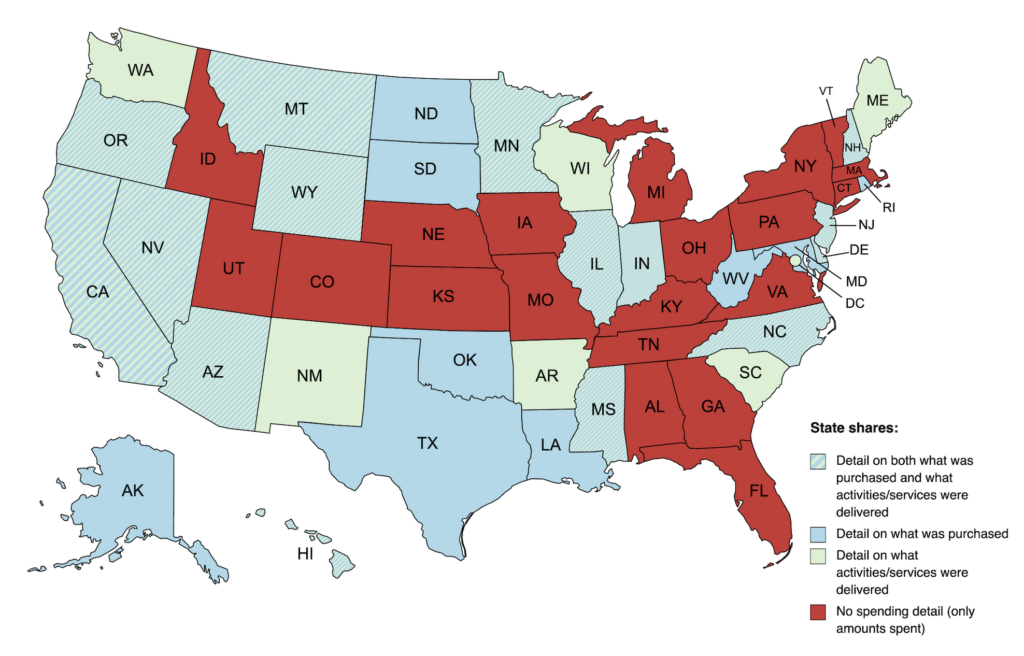
With 18 months to go before ESSER ends, Katherine Silberstein and Marguerite Roza take stock of how school districts have spent their funds so far, at Education Next.
Districts face deep financial pain in the next two years. Decisions made this spring will determine how it all plays out.

Marguerite Roza suggests keeping an eye on six critical issues during this spring’s district budget discussions, as decisions made there will determine what happens on teacher layoffs, school closings, program cuts, and more.
Sharing tough financial news? Odds are you’re doing it wrong
Edunomics Lab has commissioned lots of messaging research on district finances. Here’s some of what we’ve learned about sharing tough financial news in a way that doesn’t erode trust with staff and parents.
The Stakes Are Only Getting Higher For Pandemic School Aid Spending

Higher spending in the final months of ESSER makes for deeper cuts come the 2024-25 school year, writes Marguerite Roza in Forbes. Meanwhile, students are still far behind where they should be.
Tough finances ahead for districts. Will states come to the rescue?
Come September 2024, when ESSER runs out, districts will need to adjust annual spending down by $60B. What might that mean for employee layoffs?
Federal Data: Schools Have Been Adding Teachers Even As They Serve Fewer Students

For schools to improve their services and respond to student needs, it’s important to be precise about the exact staffing challenges they face, writes Chad Aldeman at The 74.
District are sending large sums out the door to vendors
We estimate 20-30% of ESSER is going toward contracts for purchased services, curriculum, supplies, one-time-projects, and more. Smart contracts and smart approval processes can help ensure they deliver real value for students.
Let’s Pay Parents to Help With Learning Recovery

Some school districts are flush with cash, but can’t find enough people to fill their open roles. In this Education Week commentary Chad Aldeman asks: what if schools engage families to help make headway on student recovery efforts?
District Budget Decisions & Labor Implications Tracker
This working document aggregated district choices in response to the economic downturn and budget implications related to cuts or labor impacts.
Districts play a starring role in school finance
For decades, the field of education finance has focused heavily on states (revenues, funding formulas). Now that attention is shifting to school districts’ spending choices, especially regarding federal ESSER funds.
30-Min Webinar: Is it too late for districts to redirect ESSER commitments to tackle learning gaps?

The school year had already started when test scores emerged showing deep gaps in learning. Is it too late for districts to adjust their ESSER commitments to boost recovery efforts? In this webinar we share our latest look at ESSER spending and suggest ways that districts can redirect, and in some cases refocus, their federal relief funds to respond to emerging data on what students need most.
Time to Change the District Budget Dance

Getting maximum value from available dollars is imperative, and may require some changes to the traditional budget process, writes Marguerite Roza in School Business Affairs Magazine.
Did public education miss the data revolution?
What data can shed light on whether recovery efforts are working? Are rates of chronic absenteeism coming down? Are students back on grade level in math? District leaders will only know to pivot if they look at the data.
Why Are Fewer People Becoming Teachers?
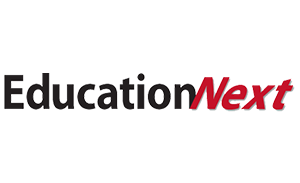
What caused the decline in teacher-preparation enrollments and completions? Until we diagnose the problem accurately, we won’t be able to devise solutions to fix it, writes Chad Aldeman in Education Next.
Public Education Missed the Data Revolution. It’s Time to Catch Up
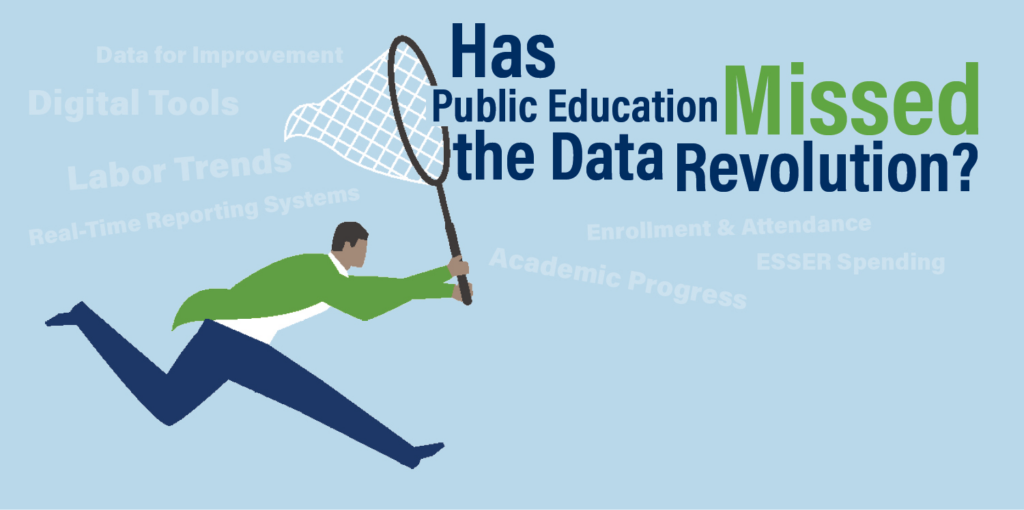
Data-free schooling means the system can’t learn as it goes and improve on what it does. It means students aren’t getting the full value from the nation’s investment in public schooling, write Marguerite Roza and Chad Aldeman. What can be done to chip away at this data desert?
ESSER money is now pouring into schools
School districts have two years left to spend about $5 billion a month, raising spending about 9% above normal expenditure levels. Then, the spigot shuts off.
On a Per-Student Basis, School Staffing Levels Are Hitting All-Time Highs

Schools in 46 states effectively lowered their teacher-student ratios by continuing to hire while enrollment has dropped, writes Chad Aldeman at The 74.
Financial Innovations During COVID Show Schools Can Be Nimble When They Have To

When districts break out of deeply ingrained expenditure habits, it’s a big deal. At The 74, Roza & Silberstein share four financial practices that emerged during the pandemic that we hope will last.
4 Ways State Leaders Can Lower Teacher Pension Costs

State and district leaders could simultaneously reduce retirement costs and improve benefits for teachers, writes Chad Aldeman.
Back to school… for school board members?
School boards are facing financial conditions unlike any before. We think practical, strategic financial skills will be particularly useful in the coming months.
What Goes Wrong When Some School Board Members Don’t Understand District Finances?
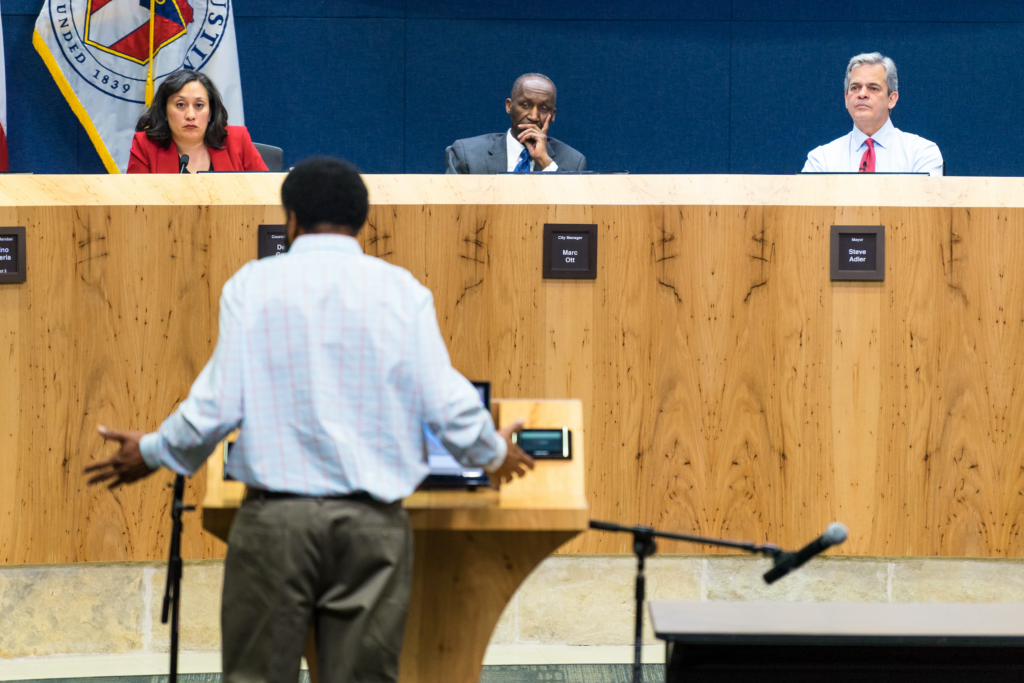
A lack of school board financial expertise is especially problematic as members wrestle with the pressures of enrollment declines, inflation, and the temporary nature of federal relief funds, writes Marguerite Roza in Forbes.
30-Min Webinar: The financial forecast is in! School district budgets are headed for a wild ride.

School district budgets are about to be hit by a powerful wave of financial pressures. In this webinar we walk through a mix of factors, explain how – and when – they’re likely to hit district budgets, and discuss how district and state leaders can make smart decisions now to prepare.
A perfect storm is brewing for K-12 school district finances
Districts across the country have just inked budgets that reflect more growth in spending than any time in the past. And yet the financial outlook has never looked gloomier.
ESSER is fueling one-size-fits-all strategies. Let’s use data to deliver more targeted efforts.
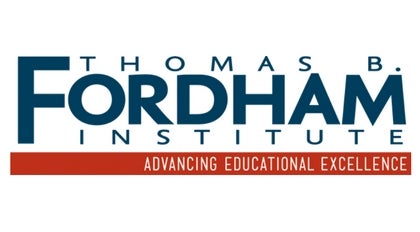
The pandemic left schools with mammoth challenges. Using data to zero in on problem hotspots makes tackling them much more manageable. That should happen now, write Marguerite Roza and Ellie Roza, while federal relief money is still on the table.
New Learning Loss Calculator Estimates COVID Slide, Costs of Catching Kids Up, in 8,000 School Districts

The Edunomics Lab team used the results from new research to build a calculator tool that estimates lost learning time in more than 8,000 school districts and what it will cost to get students back on track. In this commentary published by The 74, the authors urge district leaders to take stock of where their students are, and invest federal relief dollars now in ways that work for students.
Opinion: The N.Y. Legislature’s big class size mistake

In this New York Daily News op ed, Chad Aldeman argues that across-the-board class size caps in New York City may not benefit all students and will limit other spending that might be more effective, for example on extracurriculars or counselors or higher salaries for teachers.
Do districts need new budget moves?
It’s that time of year, the last step in what we call “The Budget Dance,” where school boards vote on a spreadsheet that officially becomes next year’s spending plan. What steps are missing in the process?
What Are Districts Using Their Federal Relief Money for? How Fast Are They Spending It? How Much Is Left? New Interactive Database Has Answers

Because Congress directed federal relief funds to flow through states, districts file for reimbursement as the funds go out the door. In an analysis published by The 74, the Edunomics Lab team shares early results of tracking the actual spending data, district by district.
Inflation Will Put Districts in a Pickle

With contract negotiations pending and federal relief funds complicating the labor market, how can school districts respond to rising inflation pressures? In this Education Next commentary, Marguerite Roza suggests options to help mitigate long-term fiscal impacts.
Look what the ESSER bunny brought!
Our new ESSER Expenditure Dashboard is now live. It tracks actual federal relief spending by district. We’ve got data for nearly half the states so far with more on the way.
ESSER Spending: Connecting Investments and Outcomes

In this National Comprehensive Center webinar, Edunomics Lab shared an “investment tool” to help SEAs and LEAs assess their ESSER III investments and finalize spending plans to do the most for students.
Responding to a Tight Teacher Labor Market

In this article in School Business Affairs Magazine, the authors outline the types of innovative compensation strategies some districts are using to attract and retain talent in response to a tight labor market.
Opinion: Pause HISD’s plan to centralize school funding
In this Houston Chronicle op ed, Jessica Swanson and Marguerite Roza urge the Houston school board to take the time to ensure a full public vetting of the superintendent’s proposal to centralize school funding.
A year ago, school districts got a windfall of pandemic aid. How’s that going?

In this Brookings Chalkboard blog, Marguerite Roza and Katherine Silberstein look at the magnitude of federal relief fund spending and conclude that districts need to up the pace at which money goes out the door each month.
Universities aren’t teaching the finance skills that K-12 leaders need

Marguerite Roza explores the gap in financial training for aspiring K-12 education leaders and suggests ways that higher education can improve its offerings.
Which schools are better at leveraging dollars for student outcomes?
We’ve created interactive data displays to compare student outcomes and spending by similarly situated schools to show which are beating the odds with the dollars they have.
Talking about ESSER: Ways to Build Community Trust and Keep the Focus on Results for Students

Laura Anderson and Marguerite Roza map six ways district leaders can communicate about and help make the most of their ESSER investments.
Marguerite Roza discusses how school districts should use federal COVID-19 relief funds to improve student outcomes

In an interview with Jude Schwalbach at Reason Foundation, Marguerite Roza urges leaders to stay laser-focused on the federal relief funds’ true purpose: ameliorating learning loss and getting kids back on track.
Punishment for Making Hard Choices in a Crisis: Federal Prison

In this Education Next commentary, Marguerite Roza explains why every education leader should care about what happened to Julia Keleher.
Setting Student Progress as a North Star Would Be a Game Changer

Shifting the focus from what districts are purchasing with ESSER funds to what progress students are making would be a game changer, writes Marguerite Roza in The 74.
The North Star of schooling
Getting students back on track is what ESSER is for, right? Or is it? With no clear end goal, focused objective, or common yardstick, ESSER desperately needs a North Star.
Do Districts Using Weighted Student Funding Formulas Deliver More Dollars to Low-Income Students?
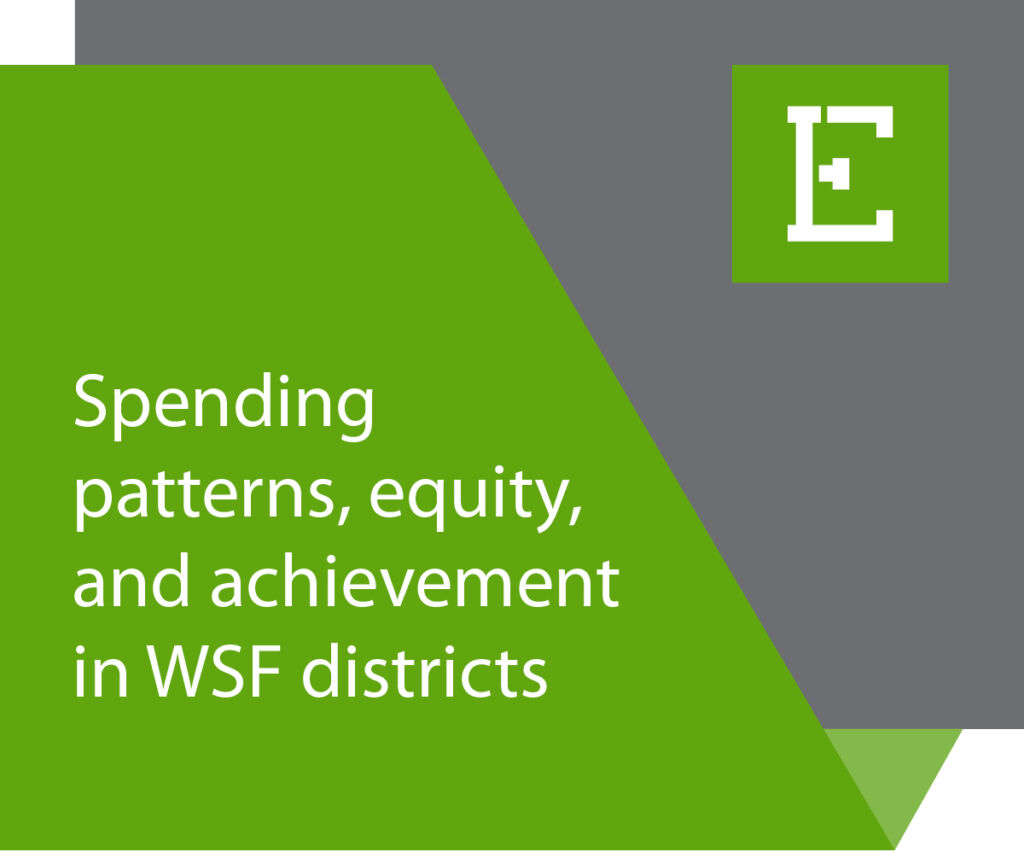
This working paper examines how equitably 20 WSF districts distribute dollars to their schools as measured against a cohort of 20 comparable districts that use a traditional, centralized staffing model.
Leading Thoughtful Conversations on Resource Equity Using School-By-School Spending Data

This resource guides leaders in using data visualizations to foster thoughtful conversations with different stakeholder groups about financial strategy and management, equity and using dollars to do the most for students.
Building Financial Leadership To Do More for Students: Lessons from a Landscape Analysis of Education Finance Curriculum in Higher Ed

This landscape analysis of current leading university education finance offerings finds that curricula lean more toward theory versus application and hands-on financial skill-building for future district and school leaders.
There Is No ‘Big Quit’ in K-12 Education. But Schools Have Specific Labor Challenges That Need Targeted Solutions

There is no ‘Big Quit’ in K-12 education. But schools have specific labor challenges that need targeted solutions, writes Chad Aldeman in The 74.
Focus On Student Outcomes, Not How Federal Funds Are Spent

Congress attached few strings to federal relief funds and will have to trust school districts to spend the money wisely. Chad Aldeman writes in Forbes that the Feds could now help clarify what the money was for by focusing on the student outcomes that matter most.
Ed Finance-Related Datasets: Key Features and Limitations
A list of datasets commonly used in education research and practice focused primarily on finance-related data.
Celebrating a wave of changes to teacher compensation
Driven by pandemic staffing challenges, many districts have embraced new pay structures. Can these approaches pave the way for more nimble compensation packages that move beyond rigid, one-size-fits-all teacher salary schedules?
30-Min Webinar: Will We Ever Know How ESSER Is Being Spent?

In this webinar we look at how federal relief money is being tracked and what we’re learning as a result.
How COVID-19 Ushered in a Wave of Promising Teacher Pay Reforms

This brief outlines the types of teacher pay innovations popping up in the midst of the pandemic, explains why they matter, and highlights some of the districts trying them. It remains to be seen whether some of these innovations may live on beyond the pandemic if district leaders find them effective.
5 Mistakes to Avoid When Spending COVID-Relief Funds

With $190 billion in federal relief funds going to schools, Marguerite Roza shares likely spending mistakes districts will make and some prescriptions for how to prevent them.
An Idea For This Moment: Districts Can Pay Families To Help Get Students And Schools Back On Track

Sharing a portion of federal relief funds with families offers school districts a chance to re-engage students and parents and sends a message that they are valued partners in solving problems that directly affect them, writes Marguerite Roza in Forbes.
Public school enrollments are falling. What does that mean for district finances?
A surge of federal funds allowed districts to keep under-enrolled schools open and fully staffed in the hopes that students come back. But using funds to protect staffing may impact what is available to pay for tutoring or other programs to get students back on track.
Ed Finance Guru Marguerite Roza on How Schools Can Best Spend Covid Aid

In an interview with Rick Hess, Marguerite Roza shares her take on how school district leaders can spend COVID-19 aid wisely and well.
The scarcity mindset that plagues education news

Education finance is a messy topic for journalists, and this last year has made it especially hard to neatly summarize the issues. at Kappan, Chad Aldeman cautions that reporters who focus exclusively on questions of scarcity may perpetuate a false narrative and miss the biggest education finance story of the last decade: How are district leaders spending their new financial windfalls, and what effect is it having on students?
Decrease in Student Enrollment: Forcing Tough Decisions

While the infusion of federal relief aid has temporarily protected most school districts from the fiscal impact of enrollment losses, this article in School Business Affairs magazine highlights why it’s important to proactively plan now for how to maintain services once those supplemental funds are gone.
NAEP scores are down. Funding is up. Wait, wut?
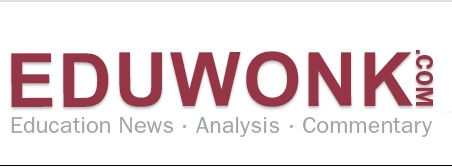
NAEP scores are going down or flat. People have different takes on why. In this Eduwonk blog, Marguerite Roza takes a look at the question of money.
Existing Federal Provisions Can – If Given Appropriate Attention – Advance Within-District Financial Equity

Four existing federal provisions have potential, if made a priority, to work together to foster within-district financial equity, write Marguerite Roza and Hannah Jarmolowski.
Do leaders have the financial skills needed for this moment?
Now more than ever, the education system depends on district leaders having financial fluency and the skills to leverage resources on behalf of students.
Six potential missteps districts might be making with federal relief funds
As leaders are knee-deep in federal relief fund planning, many are making spending choices that will exacerbate the fiscal cliff. The good news: there’s still time to change plans.
The back-to-school labor crunch
It’s a strange time in the public education labor market, and districts are having to get creative to solve their workforce challenges.
There’s a fiscal cliff coming, and some districts appear hell-bent on making it worse

Districts are right to worry about a fiscal cliff when federal relief aid runs out, cautions Marguerite Roza, but leaders have options beyond handwringing.
From Paying Parents to Transport Their Kids to School to Calling Out the National Guard — Innovating in the Face of a Bus Driver Shortage

How districts react to unusual labor challenges like the bus driver shortage may tell us whether they can adapt to meet the moment and which, if any, will consider adopting innovations common in industries outside of education.
Districts Like San Diego Could Be Locking Themselves Into Painful Cuts Down the Road

Rather than making long-term commitments that can lead to financial stress down the road, Chad Aldeman suggests there are other ways for districts to both raise pay and build capacity.
Maintenance of Equity: A New Provision with Big Implications for District Budgeting

Chad Aldeman and Marguerite Roza explain how an expansive interpretation of a new federal provision could have unintended consequences.
Wise Spending of Your Federal Relief Funds
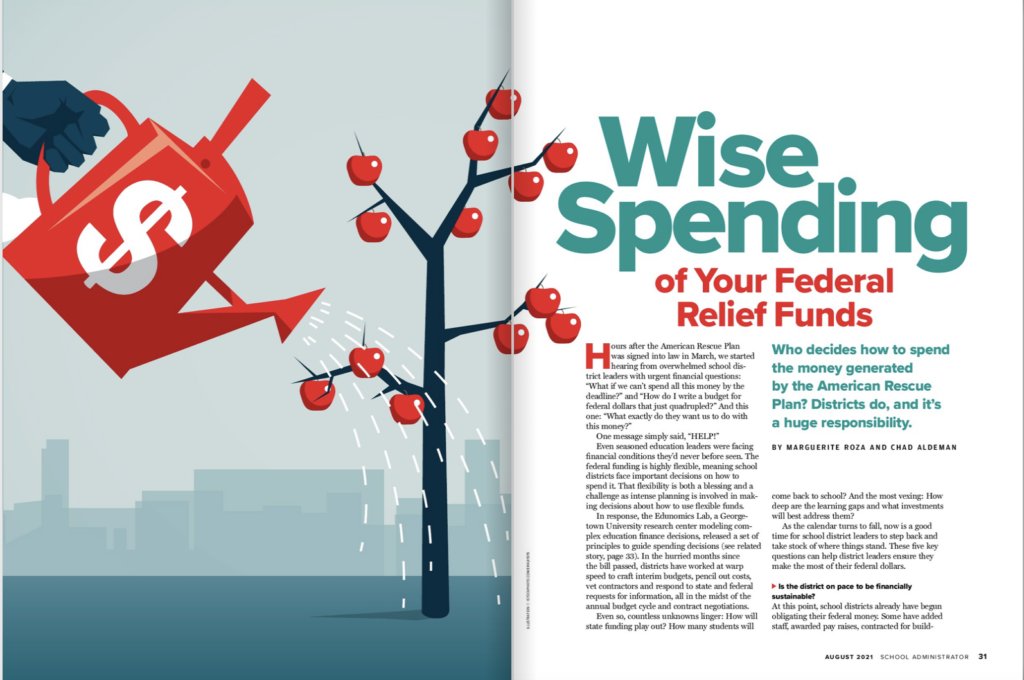
As school districts decide how to spend their flexible federal relief funding, Marguerite Roza and Chad Aldeman offer five key questions to help ensure they make the most of it for students.
The scramble to get community input on ARP spending
While the feds aren’t telling districts what to do with the money, they are telling them that they’d better make decisions with their communities.
5 Ways Principals Can Make Federal Relief Money Matter More For Their Students

Marguerite Roza and Laura Anderson map five ways principals can help make the most of the American Rescue Plan dollars, in a blog published by the National Association of Elementary School Principals.
Communication Template for Principals on Use of Federal Relief Funds

Based on messaging research on how district staff, principals, teachers, and parents engage with and react to information about school finance, this template will help principals engage their community in a way that cultivates trust and helps make the most of the federal relief dollars.
Will the American Rescue Plan’s ‘Meaningful Consultation’ Requirement Usher in Community Participation in School Budgets?

In Forbes, Marguerite Roza writes that the federal requirement for “meaningful consultation” on the use of ARP funds sounds like a call for participatory budgeting, and wonders whether it could prompt a new level of civic engagement in school spending.
Congress Provided Billions To Schools. Will Districts Spend It Creatively?

In this Forbes commentary, Chad Aldeman explains how the American Recovery Plan differs from past federal relief efforts for schools, and what that means for state and district leaders looking to make these one-time dollars count.
The clock is ticking. Help is on the way
Districts have until the end of the summer to submit plans on how they’ll spend their one-time federal relief funds. Planning for these new dollars is an incredible challenge. And the stakes are high.
Smart ways to cover the coming ‘year of ed finance’

Marguerite Roza offers six tips for reporters on covering how school districts choose to spend $122 billion in flexible American Rescue Plan funds, the biggest onetime federal payout to schools ever.
Early Analysis of State ARP Plans
Using a financial lens, the Edunomics Lab team offers an early analysis of state education agency plans for using ARP funds.
Let Schools, Not District Offices, Decide How to Spend Some Federal Aid

In this Education Next commentary, Marguerite Roza and Jessica Swanson suggest that districts give a portion of federal relief dollars directly to schools to decide how best to spend on behalf of their students.
Teacher Dissatisfaction May Be High, But So Are Retention Rates

Across Washington state, public schools retained a higher percentage of teachers last year than they do in normal years. That’s important information for school district leaders as they decide how to spend the windfall of federal relief funds headed their way.
Billions of Federal Funds Are Coming to Schools. How Should They Spend Them?

Adding staff has been the main “big bet” in public education for decades. With new federal relief aid heading to schools, will district leaders meet the moment with new and different ideas for what students need now?
Spending federal funds: Insights & opportunities
How are school districts spending their federal relief funds? That’s the question of the month… or perhaps the year! Here are three big trends we’re seeing so far…
30-Min Webinar: Federal Funds Are Flowing! What We’re Finding

In this webinar, we take the pulse on school districts’ early ESSER spending plans to share some of the patterns we’re seeing.
By Paying Stipends to Schools’ Teaching Staff, Districts Can Add Learning Time Without Breaking the Bank

In this commentary at The 74, Chad Aldeman shows how offering current teachers stipends to take on more hours could provide students with additional learning time without locking districts into long-term financial obligations.
Spending federal aid, military v. ed, & grants for NERD$
Our team has been fielding lots of requests about how to use the highly flexible federal relief dollars. With flexibility comes lots of responsibility to get it right. Toward that end, we recommend five key principles to guide spending decisions.
Best- and worst-case scenarios for how school stimulus dollars will be spent

Will an unprecedented federal infusion of money lead to an unprecedented recovery effort? In this Thomas B. Fordham Institute blog, Chad Aldeman considers the range of possibilities.
With federal relief dollars on the way, districts face big decisions

In this Education Next commentary, Marguerite Roza and Chad Aldeman suggest that it’s a good time for leaders to employ the classic “would you rather” test to help explore spending tradeoffs and think through the cost and value of competing investments.
Desired Features of a State Funding System

This decision tree describes the desired features of a state education funding formula and walks policymakers through key decisions and considerations around balancing efficiency, equity and trade-offs in particular contexts.
A way to ease student loan debt without sticking taxpayers with the bill: How about a trade?
In this Forbes commentary, Marguerite Roza proposes a way for the federal government to provide student debt relief while putting SS/Medicare back on a financially sustainable path.
30-Min Webinar: Teacher Labor Market Trends and What They Mean For District Budgets

In this webinar, we share what we’re learning from the data on teacher turnover and discuss how the current fiscal conditions should inform staffing and salaries as districts navigate budget and hiring season.
Teacher turnover, NERD$ & more
We’re excited to announce NERD$: National Education Resource Database on Schools, the first-ever national set of school-by-school spending data. Captured for research and comparisons, these data have potential to transform our understanding of ed finance.
Remote or in Person? Underspending or Running Deficits? What School Reopening Decisions Mean for District Budgets

An Edunomics Lab analysis finds that while many districts are struggling financially, those that have remained mostly or entirely virtual have actually been able to save money. Some are even on pace to run surpluses this year.
30-Min Webinar: Open Or Remote? What It Means For School District Budgets

In this webinar we explore how district spending varies depending on whether schools are remote or in-person (is the financial focus on remediation? or on reopening?), and look at what new federal relief dollars could mean for district finances.
During the pandemic, lost education jobs aren’t what they seem

In this Brookings Chalkboard blog, Chad Aldeman digs into BLS data to find that recent public education job losses stem from a slowdown in hiring, not layoffs or a surge in worker turnover.
Proceed with caution: With enrollment drops, states are looking to hold district budgets harmless

In this brief, Hannah Jarmolowski and Marguerite Roza outline what states need to weigh when it comes to hold harmless provisions.
Upcoming webinar, fun with charts & more
What’s going on with district finances? The answer: it depends. Districts that have been operating in-person since the fall have faced new costs, while districts that have been fully remote for the last year appear to be saving money on staff and facilities.
Lessons from Spanish Flu — Babies Born in 1919 Had Worse Educational, Life Outcomes Than Those Born Just Before or After. Could That Happen With COVID-19?

Chad Aldeman shares an analysis of the life trajectories of babies born during the Spanish Flu, and possible implications for the economic impacts of COVID-19.
School Spending Data: A New National Data Archive

This paper introduces a new national data archive that will capture year-over-year school-by-school spending figures reported by each state and enable easier cost-benefit analysis and new research on equity, innovation, and productivity at the school level.
30-Min Webinar: Impacts of Enrollment Shifts and Learning Loss on District Finances

In this webinar we look at the implications of enrollment losses and state revenue declines for school district budget decisions, including hold harmless policies that protect districts from losing state funds. We also consider different district investment options to address learning loss with new federal funds.
30-Min Webinar: The New Federal Aid Package

In this webinar we answer early questions about the new federal relief funds for education and share the latest financial updates and what they mean for state and district leaders in the coming months.
Tips & tools to navigate ed finance in 2021
2021 is guaranteed to be tumultuous for public education finances! As we march forward, Edunomics Lab has several resources to help leaders navigate the unstable landscape ahead.
Financial Leadership: Meeting This Moment

This article in School Business Affairs magazine illuminates the critical need to develop district leaders’ strategic finance skills.
Variation Is the Norm: A Landscape Analysis of Weighted Student Funding Implementation

This cross‐district comparison of 19 districts finds commonly cited reasons for adopting weighted student funding (equity, transparency, and school‐level spending flexibility). However, there is no standard WSF formula and districts are implementing it quite differently.
How Federal Education Aid Can Tackle The K-Shaped Learning Recovery: Let’s start with $3000 Per Disengaged Student.

In this op-ed, Marguerite Roza proposes a separate, flexible sum targeted at helping students for whom pandemic schooling isn’t working.
Lessons Learned: Weighted Student Funding

This brief summarizes findings from a three-year, U.S. Department of Education-funded research study analyzing the use of weighted student funding (WSF) at the district and state level.
Taking Stock of Principals’ Role in Weighted Student Funding Districts

In this brief, based upon a 2017-18 survey of 639 principals in 14 school districts implementing weighted student funding, we find that principals are actively engaged in the budget process and utilize their flexibilities, but often do not come into their role with the financial leadership training to carry out those tasks.
ED Surprises SEAs with New Data Release

In this blog published by the National Center, Marguerite Roza discusses efforts to make new school-by-school spending data easier to find, interpret, and use.
A Moment of (Early) Truth: Taking Stock of School-by-School Spending Data
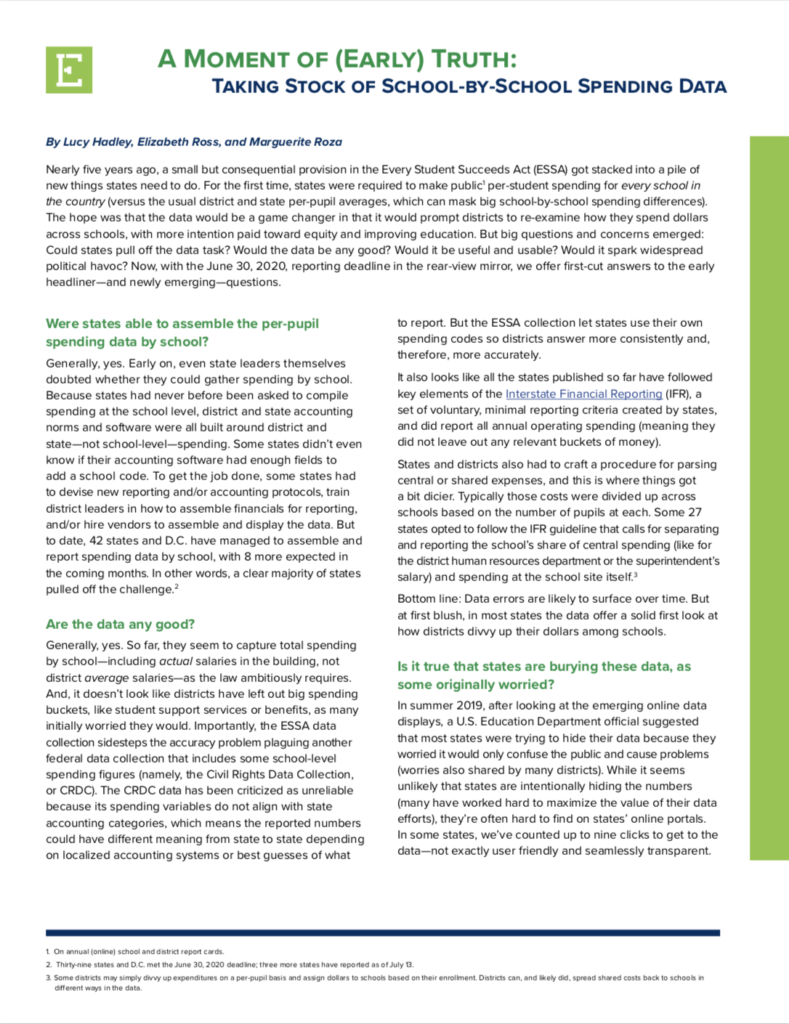
This brief offers first-cut answers to early concerns and newly emerging questions about new state reporting of per-pupil spending data.
30-Min Webinar: Updated Financials, and State and District Responses

As shortfalls in state budgets take shape, the financial outlook for public education is changing rapidly. In this webinar we share the latest implications for district finances and staffing, and a round-up of how states and districts across the country are responding.
How the coronavirus shutdown will affect school district revenues

In this Brookings Chalkboard blog, Marguerite Roza discusses what a larger state role in education funding means for districts during an economic downturn.
30-Min Webinar: Projections, Stimulus, and Typical District Actions

What will the financial turmoil will mean for public education? In this webinar we share what we are learning about the economic outlook, CARES Act, other stimulus efforts, and what states and districts might consider as they make financial plans for the coming weeks and year.
30-Min Webinar: What Will the Financial Turmoil Mean for Public Education?

In response to numerous inquiries on how school systems will be affected by the economic turmoil, this short interactive webinar shares what we are learning about the financial outlook, and what states and districts might consider as they make financial plans for the coming weeks and year.
How States Can Put Students at the Center of Their School Funding Formulas

In this Hunt Institute “Making Sense of NC School Funding” blog, Marguerite Roza provides a national perspective on how states approach school funding.
The Big Bet on Adding Staff to Improve Schools Is Breaking the Bank

By going all-in on staffing, we’ve crowded out other potential investments that can positively impact student learning. In this paper, Marguerite Roza writes that competing strategies should be viewed through the lens of which can do the most for students with the limited dollars at hand.
Edunomics Lab against the tide: Yes, eliminate CRDC finance elements

When the U.S. Department of Education proposed significant changes to the Civil Rights Data Collection, we broke with many of our peer organizations to write in support of eliminating the school finance portion.
One Reason Millennials Might Say “OK Boomer” This Holiday Season

Past generations racked up billions in teacher pension debt and younger generations are now expected to pay for it. This blog shows how a multi-generational discussion of that topic might play out.
Chicago Teachers Nearing Retirement Paid a Big Price in Striking

Chicago’s senior teachers got hit with a double whammy. As we discuss in this blog, for those at the top of the pay scale retiring in the next four years, the strike meant lost wages and a decrease in future pension payments.
Leaders Ignored Teacher Pension Debt. Now There’s Less Money for Teacher Salaries and Students

This brief quantifies, in per pupil and per teacher terms, the magnitude of the crowd-out that pension debt creates for six states: CA, IL, LA, SC, TX, and VT. The goal is to help education leaders grasp the relationship between their pension debt bills and their aspirations for spending on schooling inputs, including teacher salaries.
Chicago’s Teachers Union Agreed to Give Spending Control to Principals. Now, the Union Is Striking to Take It Away

Chicago teacher contract negotiations stalled over who controls staffing decisions in schools. In this commentary, Marguerite Roza explains why principals should be entrusted to make the spending decisions that best serve their students.
The “Would You Rather?” Test
Education spending always involves choices, and smart choices require understanding value for the dollar. This paper uses the “would you rather” exercise to explore tradeoffs in school spending and think through the value of various cost-equivalent investments.
Funding for Students’ Sake: How to Stop Financing Tomorrow’s Schools Based on Yesterday’s Priorities

Student-based allocation (also known as weighted student funding) provides the most equitable, efficient, and flexible path toward increased productivity. This brief explains why it is a good idea to allocate resources on the basis of students, and measures several states’ progress toward doing so.
A Way to Get School Finances Back Under Control
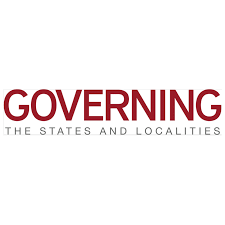
This commentary lays out why it may be time for states to establish agencies modeled on the federal Government Accountability Office (GAO) to certify school district obligations before they take effect and push districts into financial crisis.
Training School Leaders to Spend Wisely

This article in Education Next shines a light on the pressing need to better support district and school leaders in their work on the spending side of the equation.
Understanding school finance is one thing. Being effective in communicating about it is another skill entirely
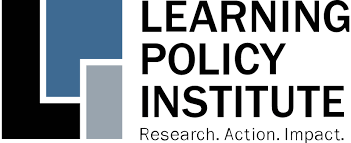
This article provides tips for school, district, and state leaders to communicate effectively about school finance issues—whether the topic is a state funding formula, a local tax levy, teacher salaries, or spending on athletics—and build much-needed trust and understanding in the process.
L.A. District Is Asking for a $500 Million Parcel Tax. In Return, Let the Schools Decide How to Spend Their New Funds

In this commentary The 74, Marguerite Roza and Anthony Drew note that many of the country’s largest school districts have shifted to a decentralized funding model, allocating funds to schools based on student needs, and boosting equity and transparency in the process. They urge LAUSD leaders to follow suit.
Weighted Student Funding Is On The Rise. Here’s What We Are Learning

In this blog, Marguerite Roza discusses initial findings from our IES-funded research study that seeks to document the range of WSF formulas and detail how they are being implemented in school systems around the nation.
DeVos Proposed $50 Million for Districts to Decentralize Federal Money, to Put Schools in the Driver’s Seat. It’s a Smart Idea

In this commentary in The 74, Marguerite Roza urges legislators to consider a proposed pilot program to give school leaders and staff a say in how federal resources are used in their schools
A Checklist to Guide Data-Visualization Decisions
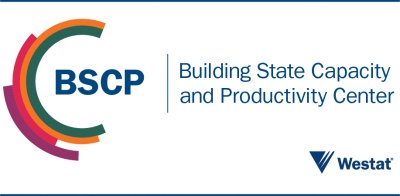
This checklist will help SEAs determine what they hope to accomplish with their financial transparency reporting and which data elements to include in order to answer a range of critical questions.
School-level spending: Financial transparency coming to every community in 2018
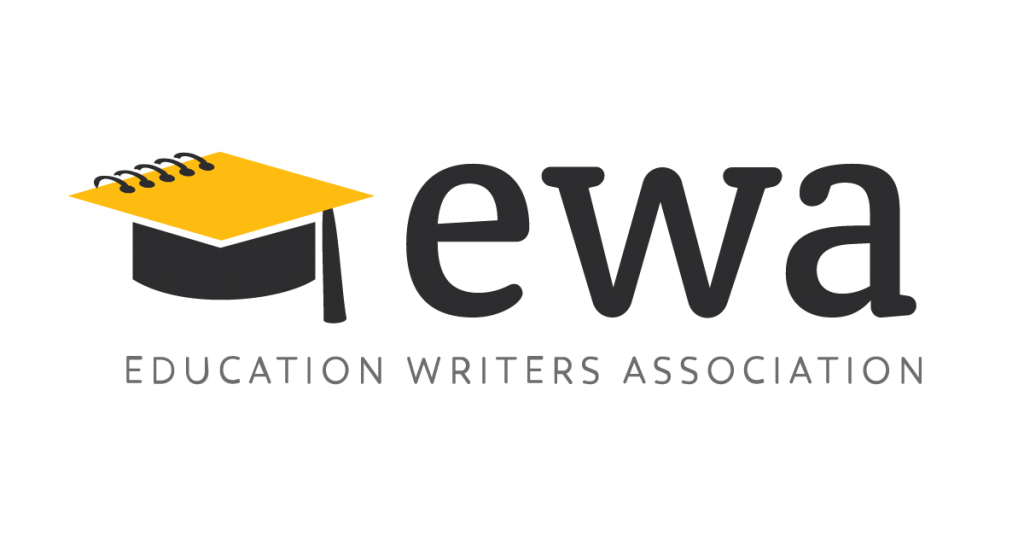
At the Education Writers Association National Seminar on June 2nd, hosted at Georgetown University in Washington, D.C., Marguerite Roza presented on new school spending reports emerging under the federal ESSA financial transparency requirement.
The Productivity Opportunity: A Role-Playing Activity to Engage Leaders in Financial and Outcomes Data
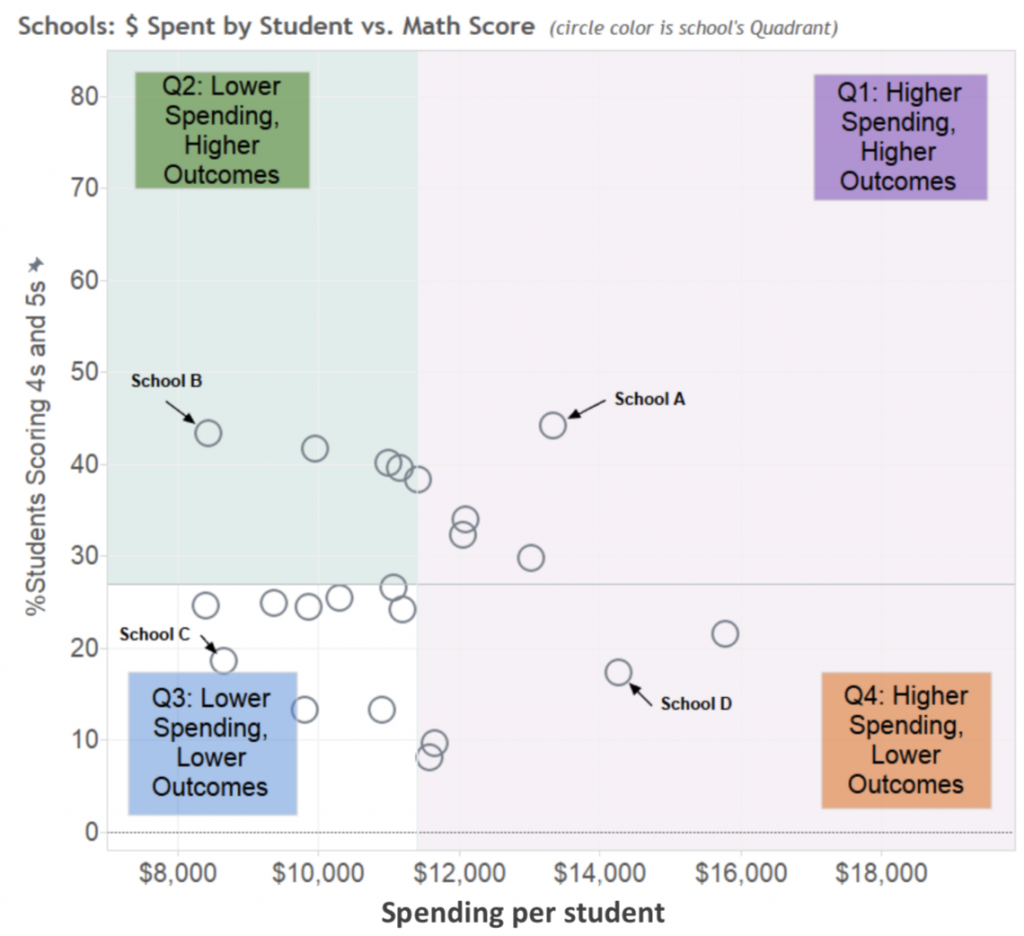
This document offers a set of exercises designed to help education leaders better understand the relationship between spending and student performance—and position them to use emerging data to explore opportunities for productivity in their day-to-day work improving education.
The Productivity of Rural Schools

Remote rural districts are often more expensive and yield lower student outcomes than urban and suburban districts. Yet some rural districts generate higher-than-expected learning results without proportionately higher spending. Based on interviews with leaders in 30 rural remote districts, Marguerite Roza identifies six factors that make some districts “productivity superstars.”

